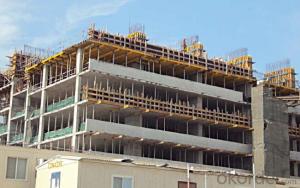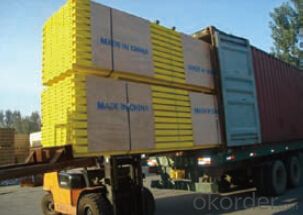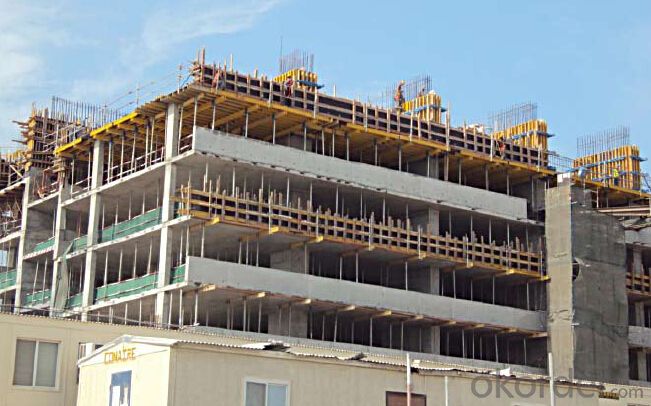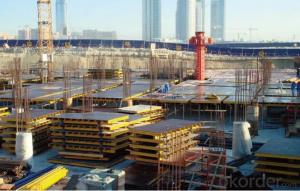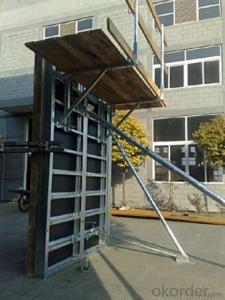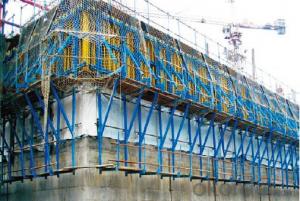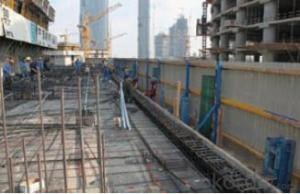Timber-beam Formwork H20 for formwork and scaffolding system
- Loading Port:
- Tianjin
- Payment Terms:
- TT OR LC
- Min Order Qty:
- 50 m²
- Supply Capability:
- 1000 m²/month
OKorder Service Pledge
OKorder Financial Service
You Might Also Like
Characteristics:
◆ Standardized production lines.
Supply capability: 3000m/day, Lmax = 6600mm.
◆ Finger jointing of the flange and web, the strength of timber beam is highly improved.
Max. shearing force failure load:40KN
◆ Well treated to prevent from water penetration or erosion, so the service life maximally
extended.
Normally, CNBM timber beam H20 can be used for 4 to 5 years, the exact using time would
depend on maintenance & storage.
◆ Robust caps at the end of the girders protect against damages.


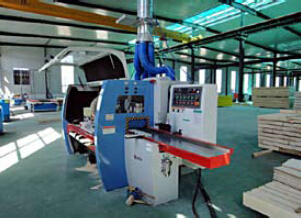
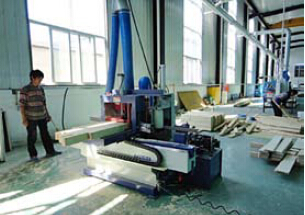
- Q: Can steel formwork be used for hotel construction projects?
- Indeed, hotel construction projects can make use of steel formwork. This adaptable and enduring solution is ideal for the creation of concrete structures, including hotels. It boasts numerous benefits, including exceptional strength, durability, and the ability to be reused. Steel formwork can withstand the immense pressure exerted by wet concrete and can be effortlessly assembled and disassembled, making it highly suitable for a range of construction endeavors, such as hotels. Moreover, it imparts a sleek and precise finish to concrete structures, guaranteeing construction of the utmost quality.
- Q: Can steel formwork be used for underground parking structures?
- Underground parking structures can indeed utilize steel formwork. Employing steel formwork offers a robust and long-lasting solution for constructing the walls, columns, and slabs of such structures. It presents numerous benefits, such as exceptional strength, flexibility, and the capacity to withstand the immense pressure exerted by soil and water in underground conditions. Furthermore, steel formwork enables faster construction compared to conventional formwork systems due to its easy assembly and disassembly, as well as its minimal maintenance requirements. Moreover, steel formwork can be reused, rendering it a cost-effective choice for underground parking structures. In conclusion, steel formwork proves to be a suitable and efficient option for the construction of underground parking structures.
- Q: What are the different surface finishes available for steel formwork?
- There are several surface finishes available for steel formwork, including smooth, textured, and coated finishes. Smooth finishes provide a sleek and polished appearance, while textured finishes create a rougher surface for enhanced grip and adhesion. Coated finishes, such as epoxy or galvanized coatings, offer additional protection against corrosion and wear.
- Q: Can steel formwork be used for fire-resistant concrete structures?
- Fire-resistant concrete structures can indeed utilize steel formwork. Steel possesses exceptional strength and heat resistance, rendering it an optimal choice for constructing formwork in such cases. Furthermore, steel formwork presents several benefits, including longevity, reusability, and effortless assembly and disassembly. By offering essential support and containment during the pouring and curing processes, it guarantees the integrity and safety of the structure in the event of a fire. Nevertheless, it is crucial to acknowledge that the fire resistance of the concrete itself is contingent upon factors like mix design, aggregate selection, and thickness, rather than relying solely on the formwork material.
- Q: How does steel formwork handle concrete shrinkage and expansion?
- Steel formwork handles concrete shrinkage and expansion by providing a rigid framework that supports and contains the concrete during the curing process. The steel formwork is designed to withstand the pressure exerted by the concrete, preventing any deformation or cracking that may occur due to shrinkage or expansion. Its strength and durability ensure that the formwork remains intact and stable, effectively managing the dimensional changes of the concrete.
- Q: How does steel formwork prevent concrete honeycombing?
- Steel formwork prevents concrete honeycombing by providing a sturdy and rigid structure that holds the concrete in place during pouring and curing. This prevents the formation of voids or gaps in the concrete, ensuring a solid and uniform surface without any honeycombing.
- Q: What are the common challenges faced during steel formwork reassembly?
- During steel formwork reassembly, there are several common challenges that can arise. One of the main challenges is ensuring proper alignment and placement of the formwork components. This includes correctly positioning the steel panels, braces, and connecting rods to ensure they are level and secure. Another challenge is managing the weight and size of the steel formwork components. Steel panels and beams can be heavy and bulky, making it difficult to maneuver and assemble them properly. This requires careful planning and coordination to ensure the safe handling and positioning of these components. Additionally, the complexity of the formwork design can pose challenges during reassembly. Steel formwork systems can be intricate and include various interlocking components and connections. It is crucial to understand the design and assembly instructions to properly reassemble the formwork and ensure its stability and strength. Proper sequencing and timing are also important challenges during steel formwork reassembly. The order in which the formwork components are assembled can impact the overall efficiency and effectiveness of the construction process. It is essential to plan the reassembly carefully and coordinate with other construction activities to avoid delays and ensure smooth progress. Finally, safety is a significant challenge during steel formwork reassembly. Working with heavy steel components can present risks for workers, including the potential for injuries due to falls, lifting accidents, or structural failures. Therefore, it is crucial to have proper safety measures in place, such as using appropriate lifting equipment, providing personal protective equipment, and ensuring workers are trained on safe assembly procedures. Overall, steel formwork reassembly requires careful planning, coordination, and attention to detail to overcome challenges related to alignment, weight, complexity, sequencing, and safety. By addressing these challenges effectively, construction projects can proceed smoothly and efficiently.
- Q: How does steel formwork affect the overall dimensional stability of a structure?
- Steel formwork can significantly enhance the overall dimensional stability of a structure. Due to its strength and rigidity, steel formwork provides excellent support to the concrete during the pouring and curing process. This ensures that the structure maintains its desired shape and dimensions without any significant deformation or dimensional changes. Additionally, steel formwork has minimal expansion and contraction properties, which further contributes to the stability of the structure. Overall, the use of steel formwork helps in achieving accurate and consistent dimensions, resulting in a structurally sound and stable building.
- Q: How does steel formwork compare to timber formwork in terms of cost?
- Compared to timber formwork, steel formwork tends to have higher upfront costs. This is mainly because steel is more expensive than timber. In addition, steel formwork often requires specialized equipment and skilled labor for assembly and disassembly, which can increase the overall cost. However, it is crucial to consider the long-term advantages and cost-effectiveness of steel formwork. Although timber formwork may have a lower initial cost, it is more prone to damage, especially in harsh weather conditions or with repeated use. On the other hand, steel formwork is highly durable and can be used for multiple construction projects, making it a cost-effective choice in the long run. Furthermore, steel formwork provides greater precision and accuracy, resulting in better quality finishes and less rework. It also allows for faster construction due to its easy assembly and disassembly, which can lead to significant time and labor savings, ultimately offsetting the higher upfront cost. To summarize, although steel formwork may be initially more expensive, it offers durability, reusability, and increased productivity, making it a more cost-effective option in the long term compared to timber formwork.
- Q: Can steel formwork be used for elevated water tanks?
- Yes, steel formwork can be used for elevated water tanks. Steel formwork is a versatile and durable construction material that can withstand the weight and pressure of water in elevated tanks. It provides a strong and stable structure for the tank, ensuring its integrity and longevity. Additionally, steel formwork allows for flexibility in design and can be easily assembled and disassembled, making it suitable for various tank sizes and configurations.
Send your message to us
Timber-beam Formwork H20 for formwork and scaffolding system
- Loading Port:
- Tianjin
- Payment Terms:
- TT OR LC
- Min Order Qty:
- 50 m²
- Supply Capability:
- 1000 m²/month
OKorder Service Pledge
OKorder Financial Service
Similar products
Hot products
Hot Searches
Related keywords

